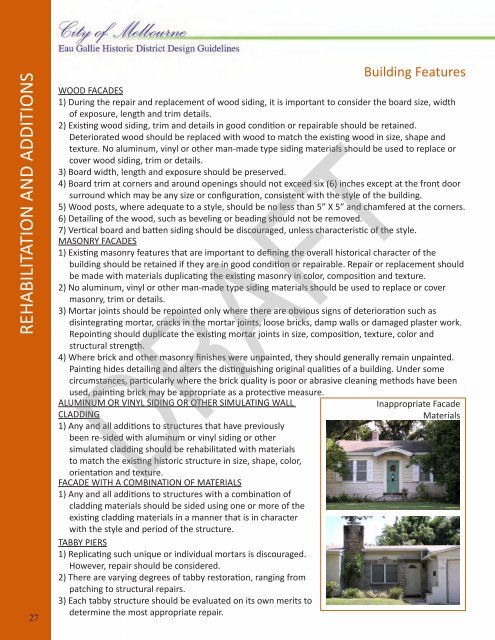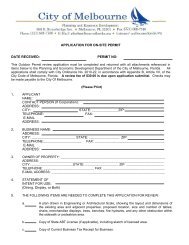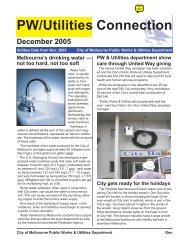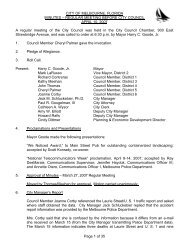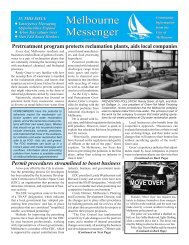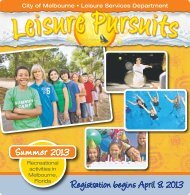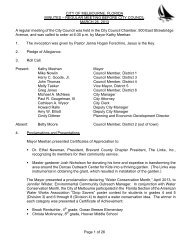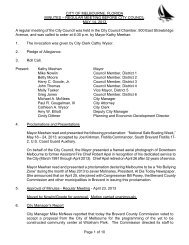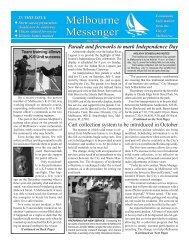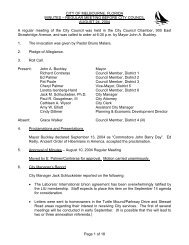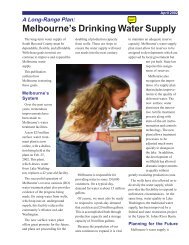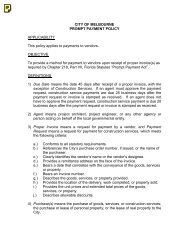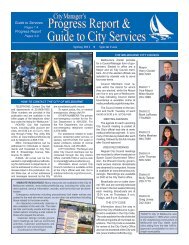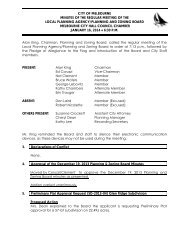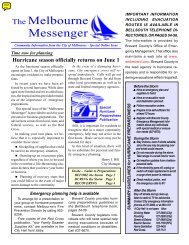Historic Guidelines - City of Melbourne, Florida
Historic Guidelines - City of Melbourne, Florida
Historic Guidelines - City of Melbourne, Florida
You also want an ePaper? Increase the reach of your titles
YUMPU automatically turns print PDFs into web optimized ePapers that Google loves.
REHABILITATION AND ADDITIONS<br />
27<br />
Building Features<br />
WOOD FACADES<br />
1) During the repair and replacement <strong>of</strong> wood siding, it is important to consider the board size, width<br />
<strong>of</strong> exposure, length and trim details.<br />
2) Existing wood siding, trim and details in good condition or repairable should be retained.<br />
Deteriorated wood should be replaced with wood to match the existing wood in size, shape and<br />
texture. No aluminum, vinyl or other man-made type siding materials should be used to replace or<br />
cover wood siding, trim or details.<br />
3) Board width, length and exposure should be preserved.<br />
4) Board trim at corners and around openings should not exceed six (6) inches except at the front door<br />
surround which may be any size or configuration, consistent with the style <strong>of</strong> the building.<br />
5) Wood posts, where adequate to a style, should be no less than 5” X 5” and chamfered at the corners.<br />
6) Detailing <strong>of</strong> the wood, such as beveling or beading should not be removed.<br />
7) Vertical board and batten siding should be discouraged, unless characteristic <strong>of</strong> the style.<br />
MASONRY FACADES<br />
1) Existing masonry features that are important to defining the overall historical character <strong>of</strong> the<br />
building should be retained if they are in good condition or repairable. Repair or replacement should<br />
be made with materials duplicating the existing masonry in color, composition and texture.<br />
2) No aluminum, vinyl or other man-made type siding materials should be used to replace or cover<br />
masonry, trim or details.<br />
3) Mortar joints should be repointed only where there are obvious signs <strong>of</strong> deterioration such as<br />
disintegrating mortar, cracks in the mortar joints, loose bricks, damp walls or damaged plaster work.<br />
Repointing should duplicate the existing mortar joints in size, composition, texture, color and<br />
structural strength.<br />
4) Where brick and other masonry finishes were unpainted, they should generally remain unpainted.<br />
Painting hides detailing and alters the distinguishing original qualities <strong>of</strong> a building. Under some<br />
circumstances, particularly where the brick quality is poor or abrasive cleaning methods have been<br />
used, painting brick may be appropriate as a protective measure.<br />
ALUMINUM OR VINYL SIDING OR OTHER SIMULATING WALL<br />
Inappropriate Facade<br />
CLADDING<br />
Materials<br />
1) Any and all additions to structures that have previously<br />
been re-sided with aluminum or vinyl siding or other<br />
simulated cladding should be rehabilitated with materials<br />
to match the existing historic structure in size, shape, color,<br />
orientation and texture.<br />
FACADE WITH A COMBINATION OF MATERIALS<br />
1) Any and all additions to structures with a combination <strong>of</strong><br />
cladding materials should be sided using one or more <strong>of</strong> the<br />
existing cladding materials in a manner that is in character<br />
with the style and period <strong>of</strong> the structure.<br />
TABBY PIERS<br />
1) Replicating such unique or individual mortars is discouraged.<br />
However, repair should be considered.<br />
2) There are varying degrees <strong>of</strong> tabby restoration, ranging from<br />
patching to structural repairs.<br />
3) Each tabby structure should be evaluated on its own merits to<br />
determine the most appropriate repair.<br />
DRAFT


